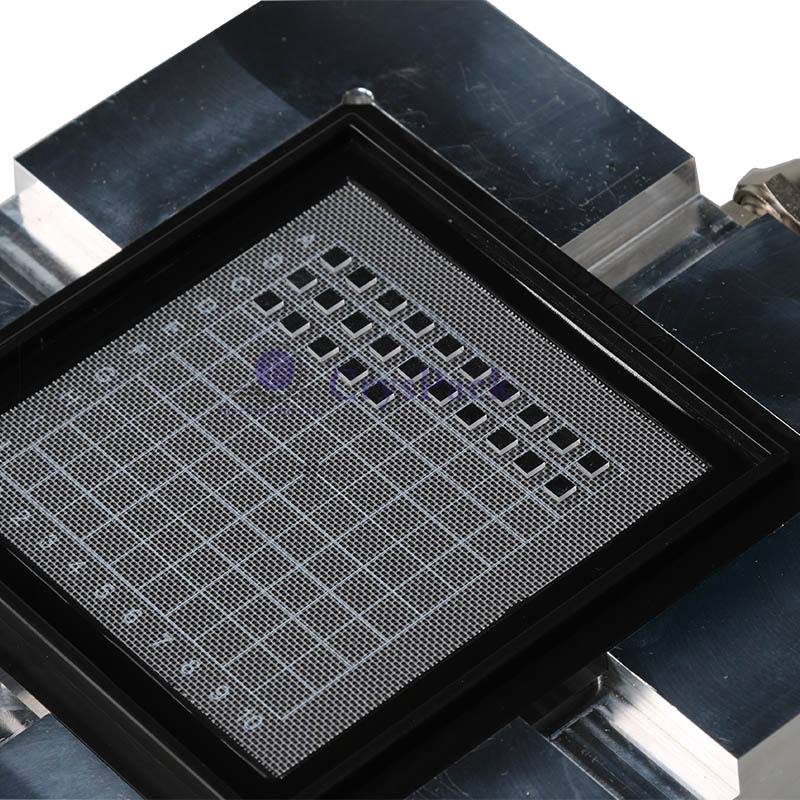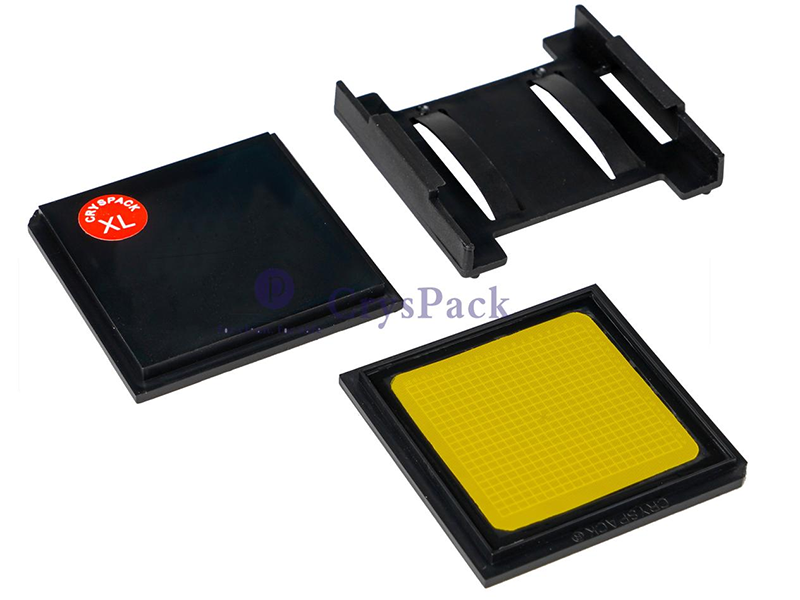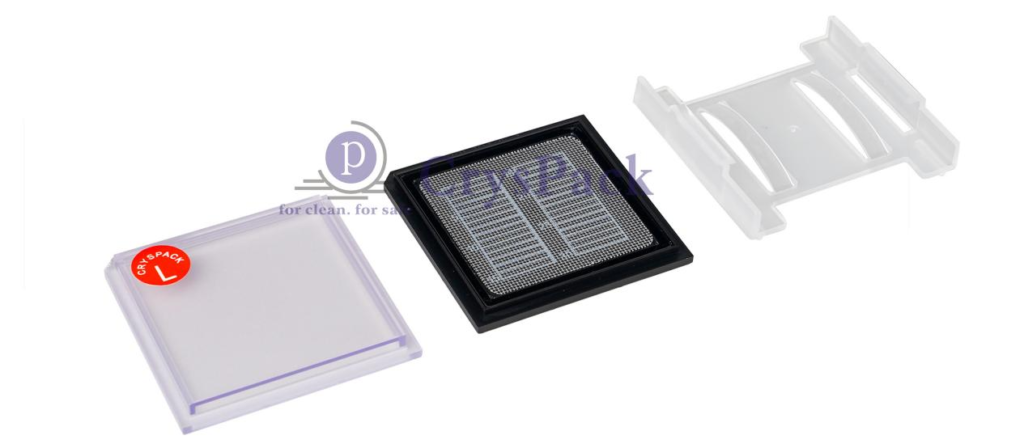Manufacturer of Vacuum Box
2024.04.16 / By admin
Meta Descriptions
CrysPack is a leading manufacturer of vacuum box with precision and durability. Discover our range of vacuum box solutions today.

What Innovations Define the Manufacturer of Vacuum Box?
At the forefront of device handling solutions, Manufacturer of vacuum box like CrysPack introduces its groundbreaking Vacuum Release (VR) Series Tray, setting a new standard for secure device transportation and effortless unloading. The VR Series Tray employs innovative “pocketless” carriers designed to securely hold devices during shipping and handling, with the unique capability to release devices on demand for easy unloading. This revolutionary technology streamlines the handling process and enhances efficiency in various industries.
Understanding Vacuum Release Technology
1.1 The Mechanism Behind VR Technology
Manufacturer of vacuum box like CrysPack’s Vacuum Release technology operates by temporarily altering the surface contact area between the device and the VR tray’s elastic Gel membrane. In the normal “Hold Mode,” the surface contact is maximized, firmly securing the devices in place for transportation and storage. However, during the temporary “Release Mode,” vacuum is applied through a hole in the tray’s underside, causing the Gel membrane to conform to the mesh’s shape. This reduces the holding force between the Gel and the device, facilitating easy device removal using a vacuum pick-up tool.
1.2 Mesh Geometry and Optimal Performance
Selecting the appropriate mesh geometry is crucial for optimizing device unloading performance. CrysPack offers a range of mesh geometries, each tailored to specific device dimensions. The goal is to minimize the number of Gel-to-Device contact points in Release Mode, ensuring smooth unloading without tilting or mis-picking issues. The recommended mesh geometry can be easily determined using CrysPack’s Product Selection Wizard Program or consulting the Mesh Chart provided by the company.
Choosing the Right Mesh Geometry
2.1 Factors Influencing Mesh Selection
The mesh size directly impacts the number of contact points between the Gel and the device during Release Mode. Larger spacing between thread lines, such as the size 16 mesh, results in fewer contact points and less Gel holding force. Conversely, smaller spacing, as seen in the size 195 mesh, increases the number of contact points. The key is to strike a balance between providing adequate support for the device and minimizing holding force to facilitate easy unloading.
2.2 Evaluation and Recommendations
For devices with varying dimensions or high aspect ratios, evaluating multiple mesh sizes may be necessary to determine the optimal configuration. CrysPack’s online program calculates the recommended mesh size based on device type, ensuring efficient and effective device handling.
Understanding Gel Retention Levels
3.1 Determining Gel Tack Levels
The Gel Retention Level, or tack level, is crucial for ensuring the device remains securely held during shipping and handling, while still allowing for easy unloading in Release Mode. Factors such as device dimensions, surface roughness, and material coating influence the required tack level. Manufacturer of vacuum box like CrysPack provides suggested retention levels based on surface properties, but it is recommended to evaluate VR samples to ensure the selected tack level balances holding force and unloading performance effectively.
3.2 Optimizing Loading Procedures
Loading devices onto the Gel surface is a straightforward process, whether performed manually or through automated systems. Standard production methods utilizing tweezers or vacuum pick-up tools are employed, with slight downforce applied to initiate good surface contact. It’s essential to avoid puncturing the Gel membrane when using tweezers and allow sufficient time for the device to achieve adequate surface contact before transport.
Maximizing Device Security: CrysPack’s Gel Holding Force Test
4.1 Verifying Gel Tack Level
To ensure the selected Gel Tack level effectively secures the loaded device, CrysPack recommends conducting a Gel Holding Force Test. This test involves closing the CrysPack Carrier and tapping the corner on a hard surface to simulate typical shipping and handling environments. The intensity of tapping should be adjusted as needed to evaluate the Gel’s ability to securely hold the device in place. For a more rigorous assessment, a drop test from a height of 1 meter can be performed after the device has been loaded onto the Gel surface for several minutes.

4.2 Addressing Device Shift
During the Gel Holding Force Test, any observed device shift indicates a need for adjustments. If devices shift position, CrysPack advises either allowing a longer waiting period to increase the Gel contact area prior to transport or evaluating a higher Gel Retention Level. For large mass devices, placing the Gel carrier upside down for 24 hours is recommended to confirm that the device remains securely attached, even under the influence of gravity.
4.3 Ensuring Long-Term Security
For long-term storage, it’s crucial to conduct a comprehensive storage test by leaving the device on the Gel for a minimum of 48 hours before unloading. This extended duration allows for maximum surface contact, ensuring the device remains securely held until it’s ready for unloading. CrysPack’s commitment to thorough testing and evaluation ensures the highest level of device security throughout the handling process.
Streamlining Device Unloading: CrysPack’s Step-by-Step Instructions
5.1 Device Unload Procedure
Manufacturer of vacuum box like CrysPack provides clear and concise instructions for unloading devices from the VR Tray, exemplified by the VR-44 example. The process begins by sliding off the Clip and removing the Lid from the VR Tray. For larger trays, such as 2″ VR trays in hinged boxes or Large Format VR plates, the tray should be removed from the box. The VR Tray is then placed on a Vacuum Plate, ensuring alignment with the vacuum plate o-ring to achieve a tight backside seal and maintain vacuum.

5.2 Initiating Release Mode
Applying 25″ Hg of vacuum puts the VR Tray into “Release Mode,” enabling easy unloading of devices. Carefully removing the devices using a vacuum pick-up tool while in Release Mode ensures efficient and damage-free unloading. Once the desired devices have been removed, the vacuum is released by pressing the pin on the Vacuum Plate, and the Lid and Clip are placed back on the VR Tray for future use. It’s important to note that VR Trays are reusable, and it’s not necessary to remove all devices from the tray after unloading.
5.3 Evaluating Unload Performance
For optimal unload results, Manufacturer of vacuum box like CrysPack recommends applying 25″ Hg of vacuum to the backside of the VR tray. The Gel membrane may appear to be in Release Mode under relatively low vacuum conditions, but full vacuum is recommended for optimal device release. Unloading the device should simulate the actual production environment, utilizing tools such as dull-tip tweezers, manual vacuum pick-up tools, or automated die handling equipment. Care should be taken to minimize overdrive during unload to prevent damage to the device or increased unload forces.
Conclusion: Advancing Device Handling with CrysPack
CrysPack’s Vacuum Release technology represents a significant advancement in device handling solutions, offering unparalleled efficiency and ease of use. By combining innovative design with precise mesh geometry and optimal Gel retention levels, CrysPack ensures secure device transportation and effortless unloading. With its commitment to excellence and continuous innovation, Manufacturer of vacuum box like CrysPack sets the standard for the future of device handling in various industries.

